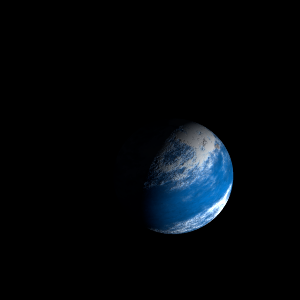|
|
Space Astro
|
Info for exoplanet "Irov-onose"
| Scientific (actual) data |
|---|
| Name | Kepler-1413 b |
| Planet status | Confirmed |
| Radius | 0.162 |
| Orbital period | 13.183 |
| Discovered | 2016 |
| Updated | 2021-02-05 |
| Tconj | 2454970 |
| Publication | Announced on a website |
| Detection type | Primary Transit |
| Alternate names | 2MASS J19372199+4629555 b, K03025.01, KIC 9716391 b, KOI-3025 b, KOI-3025.01, WISE J193722.00+462955.7 b |
| Star name | Kepler-1413 |
| Right ascension | 294.34° |
| Declination | 46.5° |
| Mag j | 14.821 |
| Mag h | 14.385 |
| Mag k | 14.224 |
| Star distance | 1162 |
| Star metallicity | -0.05 |
| Star mass | 0.84 |
| Star radius | 0.8 |
| Star age | 4.68 |
| Star temperature | 5196 |
| Star alternate names | 2MASS J19372199+4629555, KIC 9716391, KOI-3025, WISE J193722.00+462955.7 |
| Wikipedia article | Kepler-1413 b |
Back
| |
| Fictional info (?) |
|---|
| Suggested name | Irov-onose |
| Planet type | Cold planet |
| The planet telescopically displays the complete range of phases, similar to Venus and the Moon, as it moves in its inner orbit relative to Kepler-1413, which reoccurs over the so-called synodic period approximately every 162 days.
As seen relative to the fixed stars, it rotates on its axis exactly two times for every two revolutions it makes around Kepler-1413.
Because of its rapid rotation, the planet's shape is that of an oblate spheroid (it has a slight but noticeable bulge around the equator). |
| Atmosphere | Hydrogen peroxide | 64% |
| Ammonia | 35% |
| Nitric oxide | 0.95% |
| Atmospheric pressure | 0.05 bar |
 |
| No known satellites |
| Google search for Irov-onose |
|
Website by Joachim Michaelis
|
|
|
|